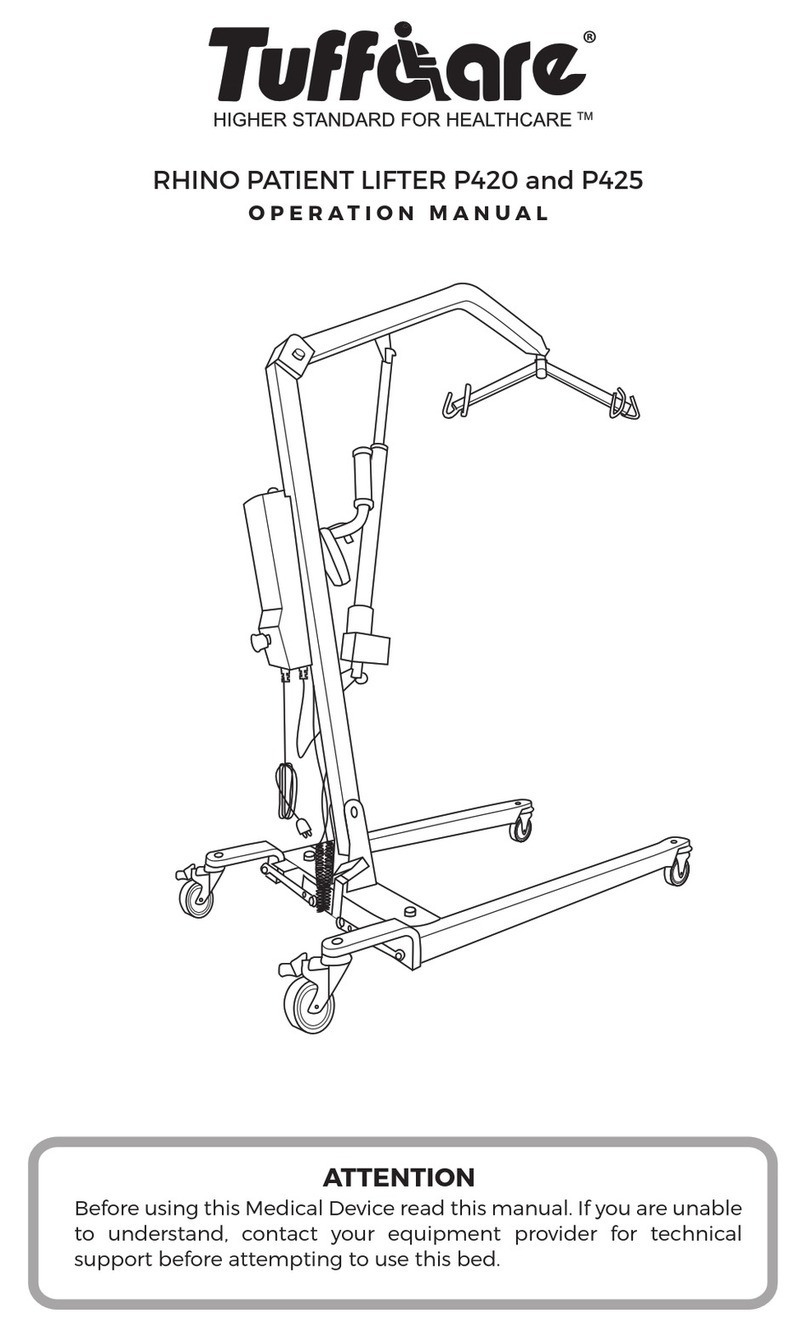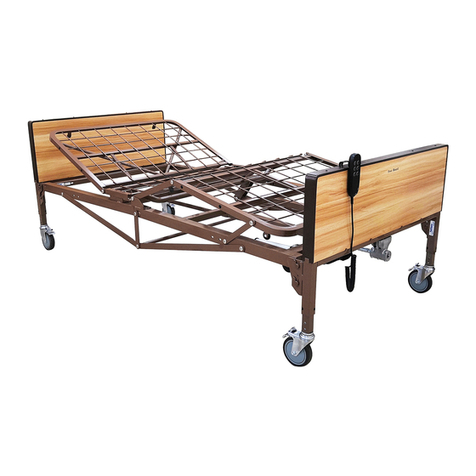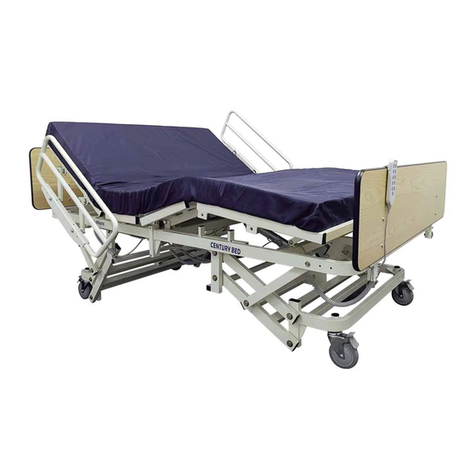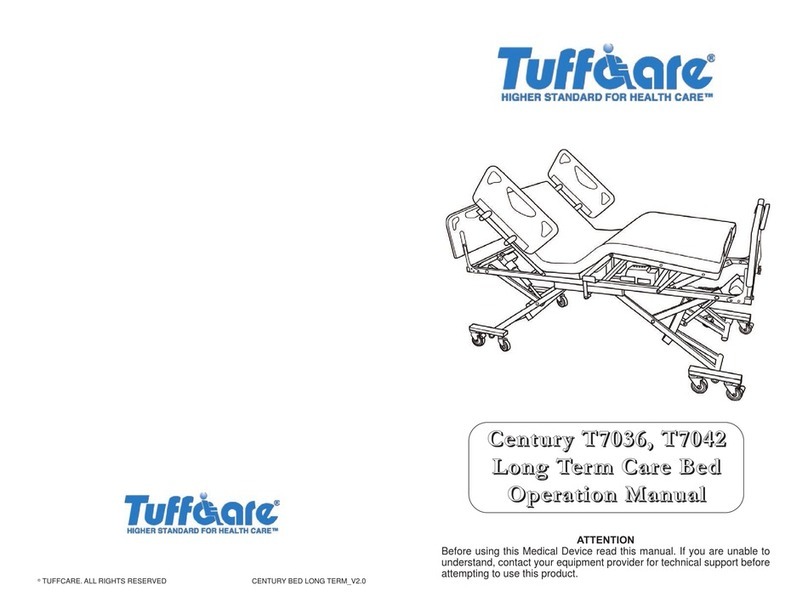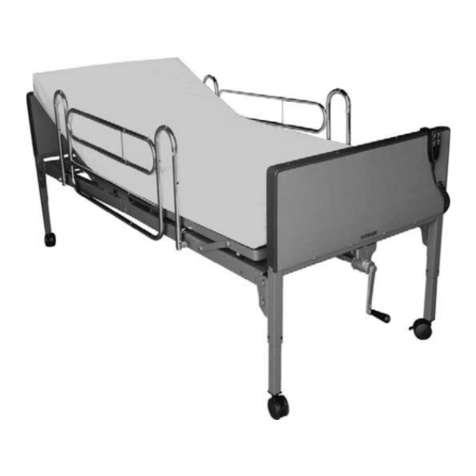- 2 -
Table of Contents
Table of Contents ................................................ 1
Safety Precautions .............................................. 2
Choose Correct Type Sling ................................ 3
Operation Instructions
Full Body Sling Spec ...................................... 4
Position Full Body Sling ................................ 5
Universal Sling Spec ................................ 6 - 7
Position Universal Sling............................ 8 - 9
Attach Slings to Lift ......................................10
Use Color Code Straps .......................... 11 -12
Attach Toileting Slings to Lift ......................13
Folding Sling for lifter.................................. 14
Transferring Patient from & to Bed .. 15 - 16
Transfer Patient in Lifter ............................ 17
Transfer Patient from & to Wheelchair .... 18
Rise the Patient from and to the Floor ...... 19
Transfer from and to Automobile .............. 20
Hip Lift Sling Spec ...................................... 21
Position Hip Lift Sling .......................... 21 - 23
Attach Hip Lift Slings to Lift .............. 24 - 27
Standing Sling Spec ...................................... 28
Position Standing Sling ........................ 29 - 31
Attach Standing Slings to Lift.............. 32 - 36
Wash and Care .................................................. 37
Warranty Information...................................... 38
- 1 -
*DO NOT operate your slings until you read and fully understand this
manual.
*DO NOT attempt any transfer without approval of the patient’s
physician, nurse or medical assistant. Use common sense in all lift
procedures. Special care must be taken with people with disabilities
who cannot cooperate while being lifted.
*DO NOT move a person suspended in a sling any distance. Tuffcare’s
Rhino patient lifts or the slings are NOT transport devices. They are
intended to transfer an individual from one resting surface to another
(such as a bed to a wheelchair). Otherwise, injury or damage may occur.
*DO NOT attempt to lift objects with the sling. The sling is designed
solely for transferring patients.
*DO NOT transfer patients over shag or deep pile carpeting, thresholds,
unpaved surfaces, outdoors or any other obstructions that can cause
wheel stoppage and the lifter to tip over.
*DO NOT transfer patients on the lifter to go up or down a deep slop.
*DO NOT lock the rear brakes or block the wheels when lifting patient.
All four wheels must be free to roll and allow the lifter to center itself
beneath the patient.
*DO NOT alter slings, do not add any kind of material (such as a plastic
back incontinence pad or seating cushion) between the patient and sling
material that may cause the patient to slide out of the sling during
transferring.
*DO NOT exceed the maximum weight capacity of the slings. (450 lbs
on small, medium, large size and all stand up slings; 600 lbs on extra
large size)
*Adjust the sling properly, position patients so their knees are slightly
above their waist and their weight a centered in the middle.
Safety Precautions

